Over the
Rainbow: the history of a song
Há uma
grande chance de que você já tenha ouvido esta charmosa música, que é quase uma
canção de ninar, sobre um lugar onde pássaros azuis voam e sonhos se realizam,
muito antes de ter visto o filme que apresentou a música para o mundo. De fato,
“Over the Rainbow” é uma das canções mais icônicas da história do cinema, e é
facilmente reconhecida – não importa se é Judy Garland ou outra pessoa
cantando. Por isso, não é de se espantar que a música tenha sido escolhida como
a número um na lista de Canções de Filmes do American Film Institution em 2004.
Chances are
that you have heard this charming song, almost a lullaby, about a place where
bluebirds fly and dreams come true, a long time before you actually saw the
film that introduced the song to the world. Indeed, “Over the Rainbow” is one
of the most iconic songs in the history of film, and an easily recognizable one
– no matter if it is Judy Garland or someone else singing. No wonder it was
chosen as the number one Song in Film by the American Film Institute in 2004.
Você deve
saber que “Over the Rainbow” foi apresentada em “O Mágico de Oz” (1939), mas
você provavelmente não sabe quem a compôs e quem escreveu a letra. Harold Arlen
foi o compositor e Yip Harburg escreveu a letra. Quem, você deve estar se
perguntando? Bem, eles não eram os Gershwin nem Rodgers e Hammerstein, mas eles
certamente merecem destaque:
You may know
that “Over the Rainbow” was introduced in “The Wizard of Oz” (1939), but you
probably don't know who composed it and wrote the lyrics. Harold Arlen was the
composer and Yip Harburg was the lyricist. Who, you may ask? Well, they were no
Gershwins or Rodgers and Hammerstein, but they were certainly worth noticing:
Harold Arlen (1905-1986) compôs mais de 500 canções, incluindo “Get
Happy”, “Stormy Weather”, “Come Rain or Come Shine” e “The Man That Got Away”. Quando
jovem, ele e o ator Ray Bolger, que interpreta o Espantalho em “O Mágico de Oz”,
foram colegas de quarto, e mantiveram a amizade por anos.
Harold Arlen
(1905-1986) composed more than 500 songs, among them “Get Happy”, “Stormy
Weather”, “Come Rain or Come Shine” and “The Man That Got Away”. As a young
man, he and actor Ray Bolger, who plays the Scarecrow in “The Wizard of Oz”,
were roommates, and the two remained friends for years.
Edgar
Yipsel ‘Yip’ Harburg (1896-1981) só começou a escrever letras de música depois
de perder uma grande quantia na quebra da bolsa de 1929. Ele e Ira Gershwin se
conheceram no ensino médio e continuaram amigos a vida toda, e foi Ira que o
aconselhou a escrever letras de música. De acordo com o filho de Yip, ele
também escreveu alguns diálogos para “O Mágico de Oz”. Yip ficou na Lista Negra
entre 1950 e 1962 por causa de sua visão liberal. Sua mais famosa canção é “Brother,
Can You Spare a Dime?”.
Edgar Yipsel
'Yip' Harburg (1896-1981) only started writing songs after he lost a huge sum
in the crash 1929. He and Ira Gershwin met in high school and remained friends
for life, and it was Ira who advised him to become a lyricist. According to Yip's
son, he also wrote some dialogue for “The Wizard of Oz”. Yip was blacklisted
from 1950 until 1962 because of his liberal views. His most famous song is
“Brother, Can You Spare a Dime?”.
Arlen e
Harburg se conheceram no começo dos anos 30 e fizeram, em 1933, a canção “It´s
Only a Paper Moon”. Outras músicas criadas pela dupla foram “Lydia the Tattooed
Lady”, do filme “Os Irmãos Marx no Circo” (1939), e “Happiness is a Thing
Called Joe”, de “Uma Cabana no Céu” (1943). Arlen e Harburg trabalharam em
outro filme de Judy Garland: “A Gata dos Meus Sonhos”, uma animação de 1962 em
que Judy dublava a protagonista. Eles também criaram a música “I Could Go on
Singing”, do filme “Na Glória, a Amargura” (1963), o último filme de Judy
Garland.
Arlen and
Harburg met in the early 30s and created, in 1933, the song “It's Only a Paper
Moon”. Other songs they created together were “Lydia the Tattooed Lady” from
the Marx's brothers “At the Circus”, and “Happiness is a Thing Called Joe”,
from “Cabin in the Sky” (1943). Arlen and Harburg worked in another Judy Garland
film: “Gay Purr-ee”, a 1962 animation in which Judy dubbed the lead. They also
wrote the title song for “I Could Go on Singing” (1963), Judy Garland's last
movie.
De acordo
com o IMDb, Harold Arlen teve uma inspiração súbita na Farmácia Schwab’s em
Sunset Boulevard, quando as primeiras notas da melodia de “Over the Rainbow”
surgiram em sua mente. Algumas fontes dizem que a inspiração foi completada por
um arco-íris que ele avistou no horizonte. Num primeiro momento, Harburg não
gostou da canção, mas mudou de ideia quando Ira Gershwin a aprovou. Isto pode
ou não ser verdade, mas ao menos é uma história poética sobre uma canção
poética.
According to
IMDb, Harold Arlen had a sudden inspirational moment at the Schwab’s Drugstore
on Sunset Boulevard, as the first notes of the melody of “Over the Rainbow”
came to his mind all of a sudden. Some sources claim that the inspiration was
completed by a rainbow he saw in the horizon. At first, Harburg didn’t like the
song, but he changed his mind when Ira Gershwin approved it. Whether this is
true of not, it’s a poetical story about a poetical song.
A
sequência que apresenta “Over the Rainbow” foi filmada por King Vidor, não
creditado, usando uma câmera móvel – não uma estática, como era de costume. A
cena tem Judy Garland, aos 16 anos, e o cãozinho Toto em tons de sépia, no
celeiro da fazenda da Tia Em. Judy gravou a música – não a cena – exatamente no
dia sete de outubro de 1938. Uma segunda versão da canção deveria ser cantada
quando Dorothy é capturada pela Bruxa Má do Oeste, mas essa cena foi
considerada triste demais para ser incluída no filme.
The sequence
that features “Over the Rainbow” was shot by an uncredited King Vidor using a
fluid camera – not a static one, as it was intended. It presents Judy Garland,
then 16, and the dog Toto in sepiatone, in the barnyard of Aunt Em's farm. Judy
recorded the song – not shot the scene – exactly on October 7th, 1938. A second
rendition of the song was supposed to happen when Dorothy is trapped by the Wicked
Witch of the West, but the scene was deemed too sad to be included in the film.
“Over the Rainbow” quase
foi cortada de “O Mágico de Oz”. Louis B. Mayer achava que a música deixava o
filme lento e também não era muito glamouroso ter uma estrela cantando em um
celeiro, de acordo com alguns empregados da MGM. No final, graças aos protestos
dos produtores Mervyn LeRoy e Arthur Freed, a música permaneceu no filme – e se
tornou a maior marca registrada tanto do filme quanto da carreira de Judy
Garland. Arlen e Harburg também ganharam o Oscar de Melhor Canção Original.
“Over the
Rainbow” was almost cut from “The Wizard of Oz”. Louis B. Mayer believed the
song slowed the picture down and it also wasn't very glamorous for the star to
sing a ballad in a barnyard, according to some MGM employees. In the end,
thanks to protests from the producers Mervyn LeRoy and Arthur Freed, the song
remained in the film – and became the biggest trademark of both the film and of
Judy Garland’s career. Arlen and Harburg also won the Oscar for Best Original
Song.
A relação
de Judy com a canção nem sempre foi pacífica. Enquanto algumas fontes dizem que
ela amava a inocência que a música traduzia, outras afirmam que ela cantou
tanto a canção que se cansou dela.
Judy’s
relationship with the song was not always a peaceful one. While some sources
say she loved the innocence the song translated, others affirm she sang it so
much she got bored by it.
A carreira
de Judy na televisão durou 14 anos, mas ela só cantou “Over the Rainbow” na TV
duas vezes. Uma destas ocasiões foi em um especial de TV de 1955, vestida com a
fantasia de mendiga do número “A Couple of Swells”. Este episódio foi
lindamente recriado na minissérie “Eu e Minhas Sombras” (2001), com Judy Davis
interpretando Judy Garland.
Judy's career
on television lasted 14 years, but she only sang “Over the Rainbow” twice on
TV. One of those occasions was in a 1955 TV special, while wearing the tramp
costume from the routine “A Couple of Swells”. This episode was beautifully
recreated in the miniseries “Me and My Shadows” (2001), with Judy Davis playing
Judy Garland.
Em 1963,
Judy estava tendo problemas nas filmagens de seu programa de TV. Por isso,
sempre que ela precisava desabafar, ela ligava para um velho amigo: o então
presidente dos EUA John Kennedy. Cada conversa com Kennedy na Casa Branca
terminava com ele pedindo para que ela cantasse um trecho de “Over the Rainbow”,
e ela o fazia, não sem antes protestar. Esta história foi contada por Liza
Minnelli e mais tarde confirmada pela antiga secretária de Kennedy.
In 1963, Judy
was having a hard time during filming her TV show. So, whenever she needed to
vent, she called an old friend: the then US president John Kennedy. Every phone
conversation with Kennedy in the White House ended with him asking her to sing
a bit of “Over the Rainbow”, and she agreeing to do so, not without protesting
first. This story was told by Liza Minnelli and later confirmed by Kennedy's
former secretary.
O
significado da canção é imenso. O site songfacts.com diz que Yip Harburg
escreveu a letra pensando no New Deal de Roosevelt e em como isso trazia
esperança para o povo – mas devemos nos lembrar de que o New Deal oficialmente
terminou em 1937, pois isso esta história é difícil de acreditar. Entretanto,
não podemos negar a influência que a música tem na comunidade LGBTQ, tendo sido
adotada como hino, pois a música fala sobre um lugar feliz onde as diferenças
são aceitas – lembre-se de como Dorothy aceitou o Leão Covarde, o Espantalho e
o Homem de Lata com todas as suas imperfeições. Judy Garland também se tornou
um ícone LGBTQ, pois muitos homens gays dos anos 50 e 60 se intitulavam “Amigos
de Dorothy”.
The
significance of the song is immense. Site songfacts.com says that Yip Harburg
wrote the lyrics thinking about Roosevelt’s New Deal and how it brought hope to
the people – but we must remember that the New Deal officially ended in 1937,
so this story is hard to believe. However, we can’t deny the influence the song
has on the LGBTQ community, as it was adopted as an anthem, since the song talks
about a happy place where differences are embraced – just remember how Dorothy
embraced the Cowardly Lion, the Scarecrow and the Tin Man with all their
imperfections. Judy Garland also became a LGBTQ icon, as many gay men of the
50s and 60s called themselves “Friends of Dorothy”.
Embora a
interpretação de Judy Garland de Over the Rainbow” seja considerada definitiva,muitos artistas gravaram a música, incluindo Frank Sinatra, Ella Fitzgerald,
Doris Day, Eric Clapton, Plácido Domingo, Ray Charles, Bob Marley, Tony
Bennett, Rita Lee, Ariana Grande e muitos outros. A versão instrumental também
foi gravada por orquestras do mundo todo.
Although Judy
Garland's rendition of “Over the Rainbow” is considered the definitive one,
many artists recorded the song, among them Frank Sinatra, Ella Fitzgerald,
Doris Day, Eric Clapton, Plácido Domingo, Ray Charles, Bob Marley, Tony
Bennett, Rita Lee, Ariana Grande and many more. The instrumental version was
also recorded by orchestras all over the world.
Ao longo
dos anos, “Over the Rainbow” foi usada em muitos filmes e programas de TV. Apenas
um ano depois da estreia de “O Mágico de Oz”, a música foi cantada por Macaulay
Connor (James Stwewart), bêbado, enquanto ele carregava Tracy Lord (Katharine
Hepburn), igualmente bêbada, pelo quintal da casa dela em “Núpcias de Escândalo”.
Over the
years, “Over the Rainbow” appeared in many films and TV shows. Only a year
after “The Wizard of Oz” premiered, the song was sung by a drunk Macaulay
Connor (James Stewart) as he carried an equally drunk Tracy Lord (Katharine
Hepburn) through her yard in “The Philadelphia Story”.
Este foi
só um exemplo. O IMDb lista 287 filmes e programas de TV que incluem a música –
entre eles temos documentários, séries, talk shows, animações, curtas e
longas-metragens do mundo todo. Produções da China, França, Espanha, Brasil,
Suécia, Dinamarca, Alemanha e outros países já incluíram a música. “Over the
Rainbow” foi composta mais de 80 anos atrás e ainda é conhecida e amada no
mundo inteiro – talvez porque todos nós desejamos conhecer o lugar que a música
descreve.
This was only
one example. IMDb lists 287 film and TVs that feature the song – among them
there are documentaries, TV series, talk shows, animations, shorts and feature
films from all over the world. Productions from China, France, Spain, Brazil,
Sweden, Denmark, Germany and other countries already featured the song. “Over
the Rainbow” was composed more than 80 years ago and it's still known and loved
all over the world – maybe because we all long for that place that the song
described.
This is my
contribution to The Wizard of Oz blogathon, hosted by Rebecca from Taking Up
Room.
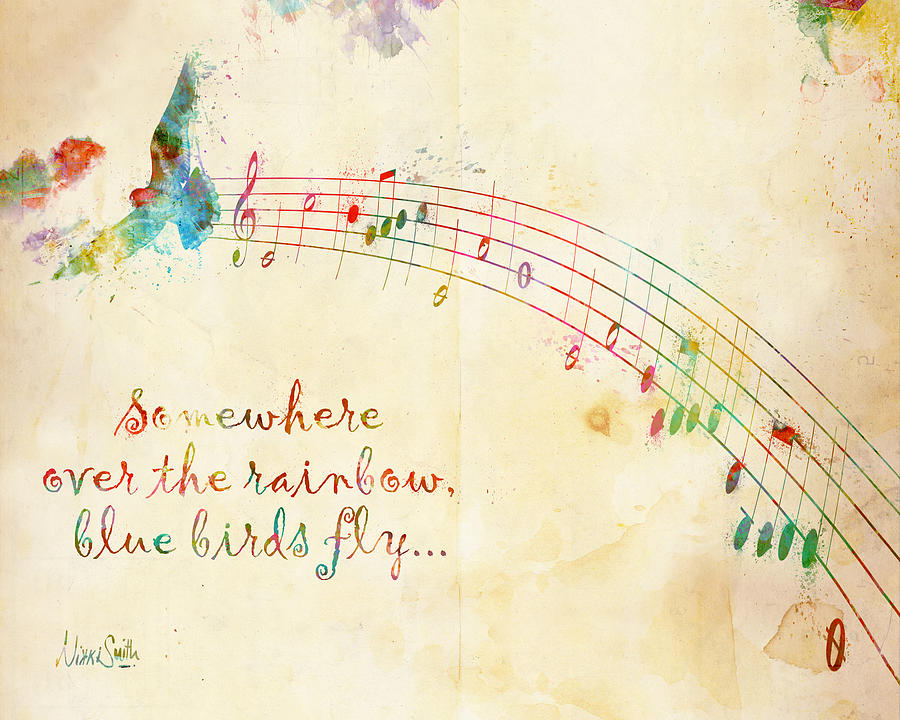


.jpg/220px-Yip_Harburg_(ca._1950).jpg)


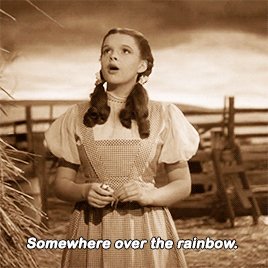
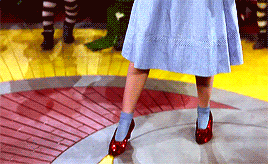


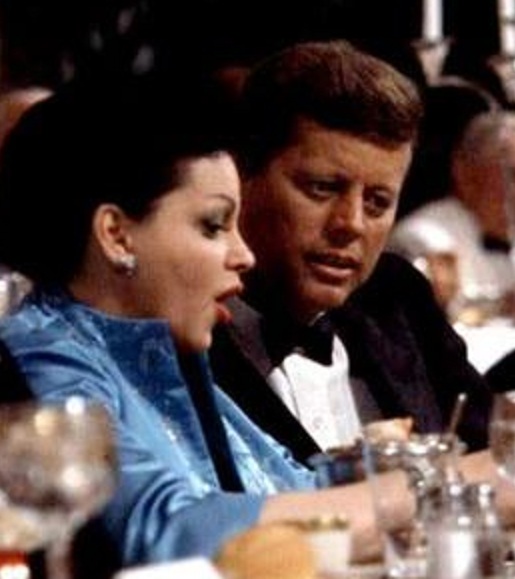

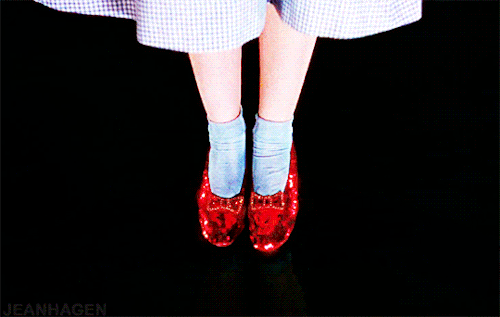

3 comments:
Wonderful choice of subject for the blogathon and thanks for filling in a lot of information.
I find in a lot of Arlen's music, the sense that we've always known it, that it has always been here. Over the Rainbow certainly has that feel.
One very odd use of Over the Rainbow is as background instrumental throughout the 20th Century Fox film noir I Wake Up Screaming. Love the movie, but it a bit jarring to hear this tune.
Considering Yip Harburg's liberal ideology, I find it quite easy to believe he was inspired by the New Deal in some of his lyric choices. After all, the effects would last past 1937.
Awesome post, Le! It's always interesting to see the stories behind songs and the impact they have on society. Thanks again for joining the blogathon. :-)
I can never wrap my head around the fact the song almost got cut from the film! Its impossible to think of this movie and Judy without the song. I know someone who doesnt like the Judy version if Over the rainbow, as the the Hawiian singer's is their favorite instead- all I can think about is HOW? This is Judy's song!
Post a Comment